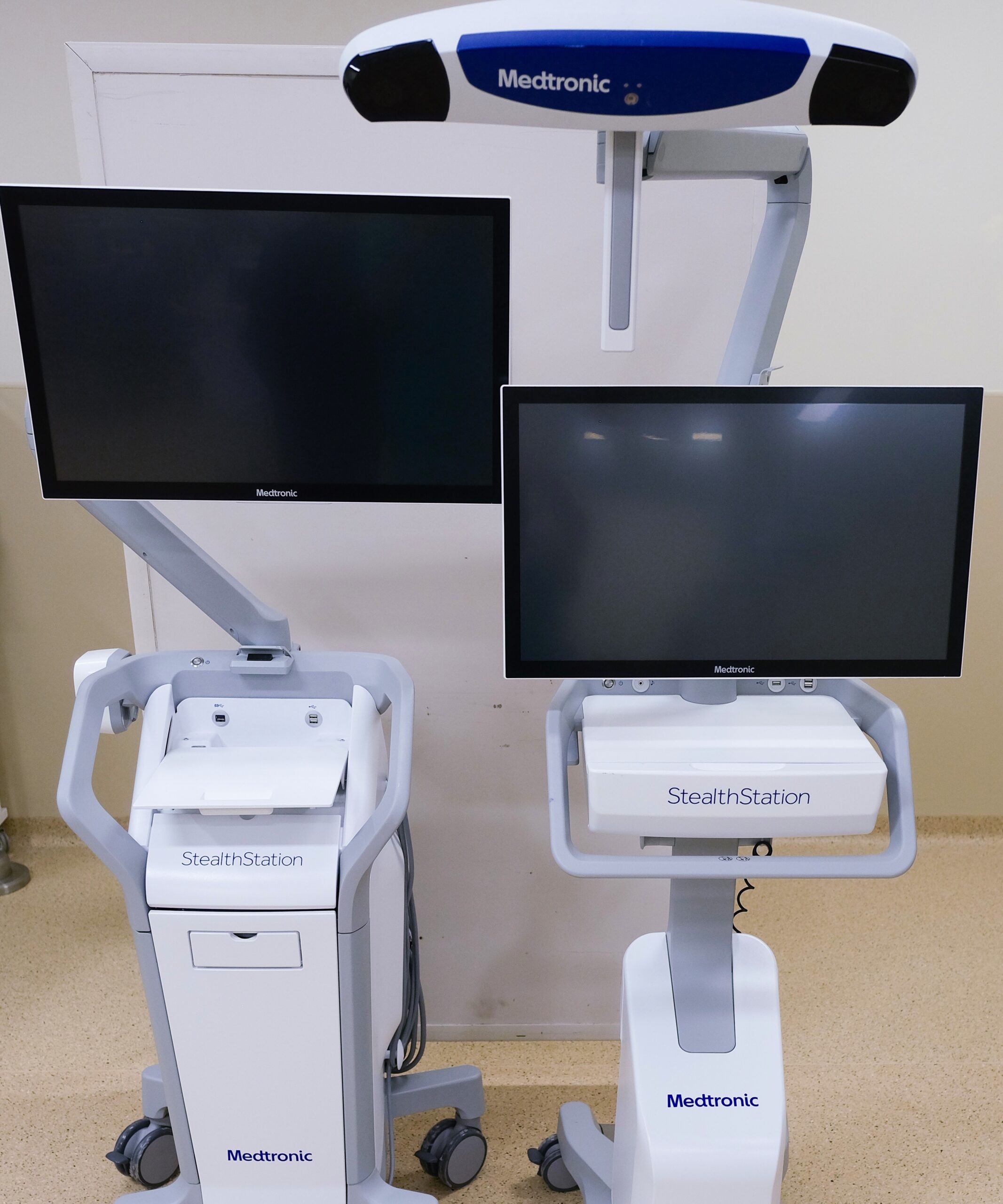Neuronavigation is a cutting-edge technology that has revolutionized the field of neurosurgery by providing real-time, highly accurate guidance for surgical procedures involving the brain and skull base. Similar to GPS for the brain, neuronavigation allows surgeons to precisely locate tumors, blood vessels, and other critical structures, safe and effective interventions. The technology integrates imaging data, such as MRI or CT scans, with real-time positional tracking to guide the surgeon during the operation, increasing accuracy and minimizing risks.
The Role of Neuronavigation in Neurosurgery
- Enhanced Surgical Precision: Neuronavigation allows neurosurgeons to visualize and plan the surgical path in real-time. The ability to map out the brain’s complex structures and precisely navigate to target areas, such as tumors, makes surgeries significantly safer.
- Better Planning and Visualization: Neuronavigation allows for detailed preoperative planning using advanced imaging techniques. Surgeons can simulate the surgery before making any incisions, giving them a clear understanding of the relationship between tumors, blood vessels, and critical functional areas of the brain.
- Surgical Flexibility and Adjustment: Neuronavigation enables surgeons to adjust their approach during the procedure as they receive continuous feedback from the system. If changes are needed based on unexpected findings or new information, the system allows for real-time modifications to the surgical plan, offering flexibility and adaptability in complex situations.
- Minimizing the Need for Invasive Techniques: By accurately guiding the surgeon to the surgical site, neuronavigation can help reduce the need for large incisions or other invasive methods. This helps to the patient faster recovery times and less postoperative pain.

Neuronavigation © ENI
How Neuronavigation Works
Neuro navigation systems integrate preoperative imaging data with real-time tracking of surgical instruments during the operation. The process generally involves the following steps:
- Preoperative Imaging: The first step in the process is obtaining high-resolution preoperative imaging of the patient’s brain or spine. This usually involves MRI (Magnetic Resonance Imaging) or CT (Computed Tomography) scans, which provide detailed anatomical information. These scans are then converted into a 3D model of the brain or spinal cord. The images are fed into the neuronavigation system, which builds a virtual map of the patient’s anatomy. This model serves as a guide for the surgery.
- Registration: Is the process of aligning the patient’s actual anatomy with the virtual 3D model in the neuronavigation system. This is typically done by placing small markers or reference points on the patient’s skin or head during surgery, which the system then uses to match the virtual map to the patient’s real-time position.
- Surgical Procedure: During surgery, the surgeon uses the neuronavigation system’s visual display to track the position of their surgical instruments in relation to the brain’s critical structures. The system provides real-time feedback, allowing the surgeon to adjust their approach as necessary to avoid sensitive areas such as functional brain regions, blood vessels, or tumors.
- Real-Time Guidance and Adjustments: As the procedure progresses, the system continually updates the position of both the patient and the surgical instruments. Surgeons can see their instruments’ location on the virtual model, providing precise information about their proximity to critical structures.

Neuronavigation © ENI
Advantages of Neuronavigation in Neurosurgery
- Increased Surgical Precision: Neuronavigation provides unparalleled accuracy in identifying and reaching specific areas in the brain or spinal cord. This is particularly valuable in surgeries involving deeply located tumors, vascular malformations, or functional brain regions where precision is paramount.
- Minimize the Risk of Complications: By offering real-time guidance, neuronavigation significantly minimize the risk of damage to critical structures such as the motor cortex, language centers, or vital blood vessels. The ability to visualize these structures in three dimensions minimizes the likelihood of inadvertent injury.
- Reduced Need for Invasive Techniques: Neuronavigation helps surgeons make smaller, more precise incisions. This reduces the invasiveness of the procedure, which in turn reduces patient trauma, postoperative pain, and the length of hospital stays.
- Optimized Use of Resources: By enabling more efficient planning and execution of complex surgeries, neuronavigation optimizes the use of operating room time and resources. Surgeons are able to perform operations more efficiently, leading to shorter surgical times and reduced risks associated with prolonged procedures.
- Real-Time Data for Decision Making: The real-time feedback provided by neuronavigation systems enables continuous decision-making throughout the procedure. Surgeons can adjust their approach as new information becomes available, helping to ensure optimal outcomes during the operation.
